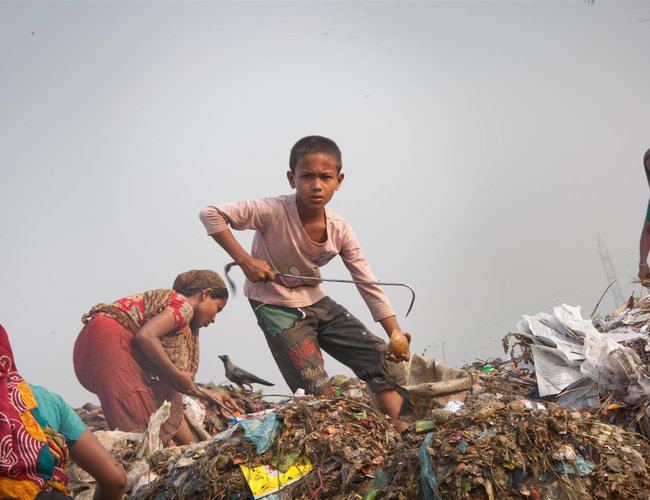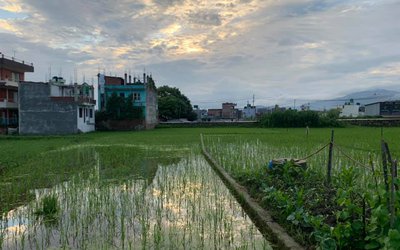
The International Labour Organization and UNICEF warn that the pandemic context may threaten Nepal’s progress in eradicating child labour
In Nepal, the pandemic is also impacting on the progress in eradicating child labour. Indeed, the Nepal Child Labour Report 2021, a joint publication of the ILO and Central Bureau of Statistics shows a declining trend of overall child labour in Nepal, reaching 1.1 million in2018 from 1.6 million in 2008. A significant decline is observed in the number of children inhazardous occupations (0.62 million in 2008 to 0.22 million in 2018).
This important progress made is now challenged by the socioeconomic realities of the COVID 19 pandemic. Children in child labour are at risk of physical and mental harm. Child labour compromises children’s education, restricting their rights and limiting their future opportunities, and leads to vicious inter-generational cycles of poverty and child labour.“Preventing child labour and protecting children from the associated risks of physical and mental harm, school drop-out and exploitation were already major challenges prior to COVID-19. As the new data shows, the severe socio-economic impact of the pandemic has hit families with children particularly hard. According to the rapid Child & Family Tracker survey carried out in late May, over 50per cent of families across Nepal have lost jobs and related livelihoods in the current context.” said Elke Wisch, UNICEF Representative in Nepal. “Increased economic hardship combined with school closures caused by COVID-19 place children already in child labour at increased risk of working longer hours or under worsening conditions, while many more may be forced into the worst forms of child labour due to job and income losses among vulnerable families. Our collective success in combatting COVID-19 needs to also be measured in the number of families we are supporting through these dire circumstances and the girls and boys who can continue to strive, grow and develop. This is not out of reach – It can be achieved through our collective investment in programmes that not only get children out of the workforce and back into school, but also social work and social protection programmes that can help families avoid making this choice in the first place.”
To reverse the upward trend in child labour, the ILO and UNICEF are calling for: Adequate social protection for all, including universal child benefits and eligibility criteria taking into account households socio-economic characteristics, increased spending on quality education and getting all children back into school - including children who were out of school before COVID-19, promotion of decent work for adults, so families don’t have to resort to children helping to generate family income., an end to harmful gender norms and discrimination that influence child labour and investment in child protection systems, social work, agricultural development, rural public services, infrastructure and livelihoods.
As part of the International Year for the Elimination of Child Labour, the global partnership Alliance 8.7, of which UNICEF and ILO are partners, is encouraging member States, business, trade unions, civil society, and regional and international organizations to redouble their efforts in the global fight against child labour by making concrete action pledges.
Nepal is a pathfinder country of the Global Alliance 8.7 Alliance. This year, more than ever it is critical to expand the path to opportunities, safety and care for all the children of Nepal.
The number of children in child labour has risen to 160 million worldwide – an increase of 8.4 million children in the last four years – with millions more at risk due to the impacts of COVID-19, according to a new report by the International Labour Organization (ILO) and UNICEF.
Child Labour: Global estimates 2020, trends and the road forward– released ahead of World Day Against Child Labour on 12th June – warns that progress to end child labour has stalled for the first time in 20 years, reversing the previous downward trend that saw child labour fall by 94 million between 2000 and 2016.
The report points to a significant rise in the number of children aged 5 to 11 years in child labour, who now account for just over half of the total global figure. The number of children aged 5 to 17 years in hazardous work – defined as work that is likely to harm their health, physical safety and psychological wellbeing – has risen by 6.5 million to 79 million since 2016.
“These new estimates indicate that despite the increasing commitment and efforts by governments, the social partners and civil society to tackle child labour, the problem remains on a massive scale, said ILO Director for Country Office in Nepal Richard Howard. “This situation represents an intolerable violation of the rights of individual children, it perpetuates poverty and it compromises economic growth and equitable development. It is high time for all of us to join forces and implement programmes to address vulnerabilities associated with child labour, including lack of social protection and decent work opportunities for families vulnerable to poverty and exclusion.”
The report warns that globally; 9 million additional children are at risk of being pushed into child labour by the end of 2022 as a result of the pandemic. A simulation model shows this number could rise to 46 million if they don’t have access to critical social protection coverage.
Even in regions where there has been some headway since 2016, such as Asia and the Pacific, and Latin America and the Caribbean, COVID-19 is endangering that progress.
In Nepal, the pandemic is also impacting on the progress in eradicating child labour. Indeed, the Nepal Child Labour Report 2021, a joint publication of the ILO and Central Bureau of Statistics shows a declining trend of overall child labour in Nepal, reaching 1.1 million in2018 from 1.6 million in 2008. A significant decline is observed in the number of children inhazardous occupations (0.62 million in 2008 to 0.22 million in 2018).
This important progress made is now challenged by the socioeconomic realities of the COVID 19 pandemic. Children in child labour are at risk of physical and mental harm. Child labour compromises children’s education, restricting their rights and limiting their future opportunities, and leads to vicious inter-generational cycles of poverty and child labour.“Preventing child labour and protecting children from the associated risks of physical and mental harm, school drop-out and exploitation were already major challenges prior to COVID-19. As the new data shows, the severe socio-economic impact of the pandemic has hit families with children particularly hard. According to the rapid Child & Family Tracker survey carried out in late May, over 50per cent of families across Nepal have lost jobs and related livelihoods in the current context.” said Elke Wisch, UNICEF Representative in Nepal. “Increased economic hardship combined with school closures caused by COVID-19 place children already in child labour at increased risk of working longer hours or under worsening conditions, while many more may be forced into the worst forms of child labour due to job and income losses among vulnerable families. Our collective success in combatting COVID-19 needs to also be measured in the number of families we are supporting through these dire circumstances and the girls and boys who can continue to strive, grow and develop. This is not out of reach – It can be achieved through our collective investment in programmes that not only get children out of the workforce and back into school, but also social work and social protection programmes that can help families avoid making this choice in the first place.”
To reverse the upward trend in child labour, the ILO and UNICEF are calling for: Adequate social protection for all, including universal child benefits and eligibility criteria taking into account households socio-economic characteristics, increased spending on quality education and getting all children back into school - including children who were out of school before COVID-19, promotion of decent work for adults, so families don’t have to resort to children helping to generate family income., an end to harmful gender norms and discrimination that influence child labour and investment in child protection systems, social work, agricultural development, rural public services, infrastructure and livelihoods.
As part of the International Year for the Elimination of Child Labour, the global partnership Alliance 8.7, of which UNICEF and ILO are partners, is encouraging member States, business, trade unions, civil society, and regional and international organizations to redouble their efforts in the global fight against child labour by making concrete action pledges.
Nepal is a pathfinder country of the Global Alliance 8.7 Alliance. This year, more than ever it is critical to expand the path to opportunities, safety and care for all the children of Nepal.
- 31 dead, 112 injured In One month of monsoon
- Jul 02, 2025
- Prime Minister Oli called for bold and urgent action to support the LDCs
- Jul 02, 2025
- Weather Forecast: Generally Cloudy With Light To Moderate Rainfall In Many Places
- Jul 02, 2025
- Prime Minister Oli And UN Secretary-General Discussed Issues of International Concerns
- Jul 01, 2025
- Nepal Airlines Corporation in 67 years
- Jul 01, 2025















